Electromechanical-assisted training for walking after stroke
- PMID: 33091160
- PMCID: PMC8189995
- DOI: 10.1002/14651858.CD006185.pub5
Electromechanical-assisted training for walking after stroke
Update in
-
Electromechanical-assisted training for walking after stroke.Cochrane Database Syst Rev. 2025 May 14;5(5):CD006185. doi: 10.1002/14651858.CD006185.pub6. Cochrane Database Syst Rev. 2025. PMID: 40365867
Abstract
Background: Electromechanical- and robot-assisted gait-training devices are used in rehabilitation and might help to improve walking after stroke. This is an update of a Cochrane Review first published in 2007 and previously updated in 2017.
Objectives: Primary • To determine whether electromechanical- and robot-assisted gait training versus normal care improves walking after stroke Secondary • To determine whether electromechanical- and robot-assisted gait training versus normal care after stroke improves walking velocity, walking capacity, acceptability, and death from all causes until the end of the intervention phase SEARCH METHODS: We searched the Cochrane Stroke Group Trials Register (last searched 6 January 2020); the Cochrane Central Register of Controlled Trials (CENTRAL; 2020 Issue 1), in the Cochrane Library; MEDLINE in Ovid (1950 to 6 January 2020); Embase (1980 to 6 January 2020); the Cumulative Index to Nursing and Allied Health Literature (CINAHL; 1982 to 20 November 2019); the Allied and Complementary Medicine Database (AMED; 1985 to 6 January 2020); Web of Science (1899 to 7 January 2020); SPORTDiscus (1949 to 6 January 2020); the Physiotherapy Evidence Database (PEDro; searched 7 January 2020); and the engineering databases COMPENDEX (1972 to 16 January 2020) and Inspec (1969 to 6 January 2020). We handsearched relevant conference proceedings, searched trials and research registers, checked reference lists, and contacted trial authors in an effort to identify further published, unpublished, and ongoing trials.
Selection criteria: We included all randomised controlled trials and randomised controlled cross-over trials in people over the age of 18 years diagnosed with stroke of any severity, at any stage, in any setting, evaluating electromechanical- and robot-assisted gait training versus normal care.
Data collection and analysis: Two review authors independently selected trials for inclusion, assessed methodological quality and risk of bias, and extracted data. We assessed the quality of evidence using the GRADE approach. The primary outcome was the proportion of participants walking independently at follow-up.
Main results: We included in this review update 62 trials involving 2440 participants. Electromechanical-assisted gait training in combination with physiotherapy increased the odds of participants becoming independent in walking (odds ratio (random effects) 2.01, 95% confidence interval (CI) 1.51 to 2.69; 38 studies, 1567 participants; P < 0.00001; I² = 0%; high-quality evidence) and increased mean walking velocity (mean difference (MD) 0.06 m/s, 95% CI 0.02 to 0.10; 42 studies, 1600 participants; P = 0.004; I² = 60%; low-quality evidence) but did not improve mean walking capacity (MD 10.9 metres walked in 6 minutes, 95% CI -5.7 to 27.4; 24 studies, 983 participants; P = 0.2; I² = 42%; moderate-quality evidence). Electromechanical-assisted gait training did not increase the risk of loss to the study during intervention nor the risk of death from all causes. Results must be interpreted with caution because (1) some trials investigated people who were independent in walking at the start of the study, (2) we found variation between trials with respect to devices used and duration and frequency of treatment, and (3) some trials included devices with functional electrical stimulation. Post hoc analysis showed that people who are non-ambulatory at the start of the intervention may benefit but ambulatory people may not benefit from this type of training. Post hoc analysis showed no differences between the types of devices used in studies regarding ability to walk but revealed differences between devices in terms of walking velocity and capacity.
Authors' conclusions: People who receive electromechanical-assisted gait training in combination with physiotherapy after stroke are more likely to achieve independent walking than people who receive gait training without these devices. We concluded that eight patients need to be treated to prevent one dependency in walking. Specifically, people in the first three months after stroke and those who are not able to walk seem to benefit most from this type of intervention. The role of the type of device is still not clear. Further research should consist of large definitive pragmatic phase 3 trials undertaken to address specific questions about the most effective frequency and duration of electromechanical-assisted gait training, as well as how long any benefit may last. Future trials should consider time post stroke in their trial design.
Copyright © 2020 The Cochrane Collaboration. Published by John Wiley & Sons, Ltd.
Conflict of interest statement
Jan Mehrholz: was co‐author of one included trial (Pohl 2007). Simone Thomas: none known. Joachim Kugler: none known. Marcus Pohl: was a co‐author of one included trial (Pohl 2007). Bernhard Elsner: none known.
These review authors (MP, JM) did not participate in quality assessment nor in extraction of data from these studies.
Figures

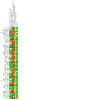


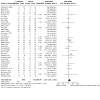

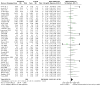
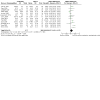
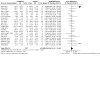
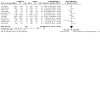

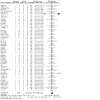

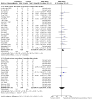



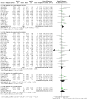

Update of
-
Electromechanical-assisted training for walking after stroke.Cochrane Database Syst Rev. 2017 May 10;5(5):CD006185. doi: 10.1002/14651858.CD006185.pub4. Cochrane Database Syst Rev. 2017. Update in: Cochrane Database Syst Rev. 2020 Oct 22;10:CD006185. doi: 10.1002/14651858.CD006185.pub5. PMID: 28488268 Free PMC article. Updated.
References
References to studies included in this review
Aprile 2017 {published data only}
-
- Aprilea I, Iacovelli C, Padua L, Galafate D, Criscuolo S, Gabbani D, et al. Efficacy of robotic-assisted gait training in chronic stroke patients: preliminary results of an Italian bi-centre study. NeuroRehabilitation 2017;41(4):775-82. [1053-8135] - PubMed
Aprile 2019 {published data only}
-
- Aprile I, Iacovelli C, Goffredo M, Cruciani A, Galli M, Simbolotti C, et al. Efficacy of end-effector robot-assisted gait training in subacute stroke patients: clinical and gait outcomes from a pilot bi-centre study. NeuroRehabilitation 2019;45(2):201-12. [1053-8135] - PubMed
Aschbacher 2006 {unpublished data only}
-
- Aschbacher B. Comparing gait training in patients after stroke with task oriented physiotherapy or robot-assisted treadmill training: a feasibility study. Unpublished 2006.
Bang 2016 {published data only}
-
- Bang DH, Shin WS. Effects of robot-assisted gait training on spatiotemporal gait parameters and balance in patients with chronic stroke: a randomized controlled pilot trial. NeuroRehabilitation 2016;38:343-9. - PubMed
Belas dos Santos 2018 {published data only}
Bergmann 2018 {published data only}
-
- Bergmann J, Krewer C, Jahn K, Muller F. Robot-assisted gait training to reduce pusher behavior: a randomized controlled trial. Neurology 2018;91(14):e1319-27. [1526-632X] - PubMed
-
- DRKS00003444. Treatment study with locomotor training vs conventional physiotherapy in patients with pusher behaviour. www.drks.de/drks_web/navigate.do?navigationId=trial.HTML&TRIAL_ID=DR... 2013.
Brincks 2011 {published data only}
-
- Brincks J. The order of gait training, including Lokomat® and Physiotherapy, does not influence gait symmetry in subacute ambulatory persons with stroke. In: World Physical Therapy , editors(s). Physiotherapy, Supplement S1, 16th World Congress of Physical Therapy, 2011 June 20-23, Amsterdam. Vol. 97. World Confederation of Physical Therapy, 2011. [Number: RR-PO-208-17-Tue]
Buesing 2015 {published data only}
-
- Buesing C, Fisch G, O'Donnell M, Shahidi I, Thomas L, Mummidisetty CK, et al. Effects of a wearable exoskeleton stride management assist system (SMA) on spatiotemporal gait characteristics in individuals after stroke: a randomized controlled trial. Journal of NeuroEngineering and Rehabilitation 2015;12(69). - PMC - PubMed
Calabrò 2018 {published data only}
-
- NCT03162263. Improving functional outcomes and neuroplasticity by using Ekso. https://clinicaltrials.gov/show/NCT03162263; 2017.
Chang 2012 {published data only}
-
- Chang WH, Kim MS, Huh JP, Lee PK, Kim YH. Effects of robot-assisted gait training on cardiopulmonary fitness in subacute stroke patients: a randomized controlled study. Neurorehabilitation and Neural Repair 2012;26(4):318–24. - PubMed
-
- Kim M, Kim YH, Lee PKW, Hyong MK, Jung PH. Effect of robot-assisted gait therapy on cardiopulmonary fitness in subacute stroke patients. Neurorehabilitation and Neural Repair 2008;22:594. - PubMed
Cho 2015 {published data only}
Chua 2016 {published data only}
-
- ACTRN12616000844448. An electromechanical gait trainer for ambulation training after stroke. http://www.who.int/trialsearch/Trial2.aspx?TrialID=ACTRN12616000844448; 2016.
-
- Chua J, Culpan J, Menon E. Efficacy of an electromechanical gait trainer poststroke in Singapore: a randomized controlled trial. Archives of Physical Medicine and Rehabilitation 2016;97:683-90. - PubMed
Dias 2006 {published data only}
-
- Dias D, Laíns J, Pereira A, Nunes R, Caldas J, Amaral C, et al. Partial body weight support in chronic hemiplegics: a randomized control trial. Europa Medicophysica 2007;43(4):499-504. - PubMed
Erbil 2018 {published data only}
-
- Erbil D, Tugba G, Murat TH, Melike A, Merve A, Cagla K, et al. Effects of robot-assisted gait training in chronic stroke patients treated by botulinum toxin-a: a pivotal study. Physiotherapy Research International 2018;23(3):e1718. - PubMed
Fisher 2008 {published and unpublished data}
-
- Fisher S, Lucas L, Thrasher TA. Robot-assisted gait training for patients with hemiparesis due to stroke. Topics in Stroke Rehabilitation 2011;18(3):269-76. - PubMed
-
- Fisher S. Use of autoambulator for mobility improvement in patients with central nervous system (CNS) injury or disease. Neurorehabilitation and Neural Repair 2008;22:556.
Forrester 2014 {published data only}
Gandolfi 2019 {published data only}
-
- NCT03566901. Robot-Assisted Stair Climbing Training. https://clinicaltrials.gov/ct2/show/record/NCT03566901; 2017.
Geroin 2011 {published data only}
-
- Geroin C, Picelli A, Munari D, Waldner A, Tomelleri C, Smania N. Combined transcranial direct current stimulation and robot-assisted gait training in patients with chronic stroke: a preliminary comparison. Clinical Rehabilitation 2011;25(6):537-48. - PubMed
Han 2016 {published data only}
Hidler 2009 {published data only (unpublished sought but not used)}
-
- Hidler J, Nichols D, Pelliccio M, Brady K, Campbell DD, Kahn JH, et al. Multicenter randomized clinical trial evaluating the effectiveness of the Lokomat in subacute stroke. Neurorehabilitation and Neural Repair 2009;23(1):5-13. - PubMed
Hornby 2008 {published data only}
-
- Hornby TG, Campbell DD, Kahn JH, Demott T, Moore JL, Roth HR. Enhanced gait-related improvements after therapist- versus robotic-assisted locomotor training in subjects with chronic stroke: a randomized controlled study. Stroke 2008;39(6):1786-92. - PubMed
Husemann 2007 {published data only}
-
- Husemann B, Müller F, Krewer C, Laß A, Gille C, Heller S, et al. Effects of locomotion training with assistance of a driven gait orthosis in hemiparetic patients after stroke. Neurologie & Rehabilitation 2004;10(4):25.
-
- Husemann B, Müller F, Krewer C, Laß A, Gille C, Heller S, et al. Effects of locomotion training with assistance of a robot-driven gait orthosis in hemiparetic patients after stroke: a randomized controlled pilot study. Stroke 2007;38(2):349-54. - PubMed
Jayaraman 2019 {published data only}
-
- Jayaraman A, O'Brien MK, Madhavan S, Mummidisetty CK, Roth HR, Hohl K, et al. Stride management assist exoskeleton vs functional gait training in stroke: a randomized trial. Neurology 2019;92(3):132. [0028-3878] - PubMed
-
- NCT03222505. Walk assist device to improve community ambulation. https://clinicaltrials.gov/ct2/show/NCT03222505; 2018.
Kayabinar 2019 {published data only}
-
- Kayabinar E, Ozalp M, Kocyigit MF, As I, Elbasan B. The effects of robotic and conventional gait training in addition to neurodevelopmental treatment on balance, mobility, and health-related quality of life in patients with stroke. Neurological Sciences and Neurophysiology 2019;36(2):112-9. [2636-865X]
Kelley 2013 {published data only}
-
- Kelley CP, Childress J, Boake C, Noser EA. Over-ground and robotic-assisted locomotor training in adults with chronic stroke: a blinded randomized clinical trial. Disability & Rehabilitation: Assistive Technology 2013;8(2):161-8. [1748-3107] - PubMed
Kim 2015 {published data only}
-
- Kim S-Y, Yang L, Park IJ, Kim EJ, Park MS, You SH, et al. Effects of innovative WALKBOT robotic-assisted locomotor training on balance and gait recovery in hemiparetic stroke: a prospective, randomized, experimenter blinded case control study with a four-week follow-up. IEEE Transactions on Neural Systems & Rehabilitation Engineering 2015;23(4):636-42. [1558-0210] - PubMed
Kim 2019a {published data only}
-
- NCT02680691. Robot assisted gait training in patients with infratentorial stroke. https://clinicaltrials.gov/show/NCT02680691; 2016.
Kim 2019b {published data only}
-
- Kim J, Kim DY, Chun M, Kim SW, Jeon H, Hwang C, et al. Effects of robot-(Morning Walk®) assisted gait training for patients after stroke: a randomized controlled trial. Clinical Rehabilitation 2019;33(3):516‐23. - PubMed
-
- Lee JK, Dae Yul K. The effect of morning walk (end-effector type robot) training for patients with hemiparesis due to stroke. European Stroke Journal 2018;3(1):124.
Kwon 2018 {published data only}
-
- Kwon BS, Nam YG, Lee HJ, Jo EH, Lee JW. Effects of electromechanical assisted gait training with Exowalk on walking ability of chronic stroke patients: a randomized controlled trial. Annals of Physical and Rehabilitation Medicine 2018;Volume 61(Supplement):Page e35. [DOI: 10.1016/j.rehab.2018.05.077] - DOI
Kyung 2008 {published and unpublished data}
-
- Jung KH, Ha HG, Shin HJ, Ohn SH, Sung DH, Lee PKW, et al. Effects of robot-assisted gait therapy on locomotor recovery in stroke patients. Journal of Korean Academy of Rehabilitation Medicine 2008;32:258-66.
-
- Kyung HJ, Kim YH. Effects of robot-assisted gait therapy on locomotor recovery in stroke patients. In: Asia-Oceanian Conference of Physical & Rehabilitation Medicine; 2008 May 16-19; Nanjing, China. 2008.
Lee 2019 {published data only}
-
- Lee H-J, Lee S-H, Seo K, Lee M, Chang WH, Choi B-O, et al. Training for walking efficiency with a wearable hip-assist robot in patients with stroke: a pilot randomized controlled trial. Stroke 2019;50(12):3545-52. [0039-2499] - PubMed
Lu 2017 {published data only}
-
- Lu JL, Chen ZM, Wu H, Yang W, Chen HH. Effect of lower limb rehabilitation robot on lower limb motor function of hemiplegic patients after stroke. Chinese Journal of Contemporary Neurology and Neurosurgery 2017;17(5):334-9. [1672-6731]
Mayr 2008 {published and unpublished data}
-
- Mayr A, Quirbach E, Picelli A, Kofler M, Smania N, Saltuari L. Effect of early robot-assisted gait retraining in nonambulatory patients with stroke: a single-blind randomized controlled trial. Unpublished 2016. - PubMed
-
- Mayr A, Saltuari L, Quirbach E. Impact of Lokomat training on gait rehabilitation. Neurorehabilitation and Neural Repair 2008;22(5):596. - PubMed
Mayr 2018 {published data only}
-
- Mayr A, Quirbach E, Picelli A, Kofler M, Smania N, Saltuari L. Early robot-assisted gait retraining in non-ambulatory patients with stroke: a single blind randomized controlled trial. European Journal of Physical and Rehabilitation Medicine 2018;54(6):819‐26. - PubMed
Morone 2011 {published and unpublished data}
-
- Morone G, Bragoni M, Iosa M, De Angelis D, Venturiero V, Coiro P, et al. Who may benefit from robotic-assisted gait training? A randomized clinical trial in patients with subacute stroke. Neurorehabilitation and Neural Repair 2011;25(7):636-44. - PubMed
Nam 2019 {published data only}
-
- Nam YG, Lee JW, Park JW, Lee HJ, Nam KY, Park JH, et al. Effects of electromechanical exoskeleton-assisted gait training on walking ability of stroke patients: a randomized controlled trial. Archives of Physical Medicine and Rehabilitation 2019;100(1):26-31. [0003-9993] - PubMed
Nam 2020 {published data only}
Noser 2012 {published data only (unpublished sought but not used)}
-
- NCT00975156. NCT00975156 [Improving ambulation post stroke with robotic training]. clinicaltrials.gov/show/NCT00975156 (first received: 10 September 2009).
Ochi 2015 {published data only}
-
- Ochi M, Wada F, Saeki S, Hachisuka K. Gait training in subacute non-ambulatory stroke patients using a full weight-bearing gait-assistance robot: a prospective, randomized, open, blinded-endpoint trial. Journal of the Neurological Sciences 2015;353(1-2):130-6. [1878-5883] - PubMed
Park 2018 {published data only}
-
- Park J, Chung Y. The effects of robot-assisted gait training using virtual reality and auditory stimulation on balance and gait abilities in persons with stroke. NeuroRehabilitation 2018;43(2):227-35. [1053-8135] - PubMed
Peurala 2005 {published data only}
-
- Peurala S, Tarkka I, Pitkänen K, Sivenius J. The effectiveness of body weight-supported gait training and floor walking in patients with chronic stroke. Archives of Physical Medicine and Rehabilitation 2005;86:1557-64. - PubMed
-
- Peurala SH, Pitkanen K, Sivenius J, Tarkka I. Body-weight supported gait exercise compared with floor walking in chronic stroke patients. Archives of Physical Medicine and Rehabilitation 2004;85:E7. - PubMed
-
- Peurala SH, Pitkanen K, Sivenius J, Tarkka IM. Body-weight supported gait trainer exercises with or without functional electrical stimulation improves gait in patients with chronic stroke. Neurorehabilitation and Neural Repair 2006;20(1):98.
Peurala 2009 {published and unpublished data}
-
- Peurala SH, Airaksinen O, Huuskonen P, Jäkälä P, Juhakoski M, Sandell K, et al. Effects of intensive therapy using gait trainer or floorwalking exercises early after stroke. Journal of Rehabilitation Medicine 2009;41(3):166-73. - PubMed
Picelli 2016 {published data only}
-
- Picelli A, Bacciga M, Melotti C, Marchina E, Verzini E, Ferrari F, et al. Combined effects of robot-assisted gait training and botulinum toxin type A effect on spastic equinus foot in patients with chronic stroke: a pilot, single blind, randomized controlled trial. European Journal of Physical and Rehabilitation Medicine 2016;52(6):759-66. [PMID: ] - PubMed
Pohl 2007 {published data only}
-
- Pohl M, Werner C, Holzgraefe M, Kroczek G, Mehrholz J, Wingendorf I, et al. Repetitive locomotor training and physiotherapy improve walking and basic activities of daily living in subacute, non-ambulatory stroke patients: a single-blind, randomised multi-centre trial (DEutsche GAngtrainerStudie, DEGAS). Clinical Rehabilitation 2007;21(1):17-27. - PubMed
Saltuari 2004 {published data only}
-
- Saltuari L. Efficiency of Lokomat training in stroke patients. Neurologie & Rehabilitation 2004;10(4):S4.
Schwartz 2006 {unpublished data only}
-
- Schwartz I, Katz-Leurer M, Fisher I, Sajin A, Shochina M, Meiner Z. The effectiveness of early locomotor therapy in patients with first CVA. In: Collaborative Evaluation of Rehabilitation in Stroke Across Europe (CERISE) Congress; 2006 February 10-11; Leuven, Belgium. 2006.
Sczesny‐Kaiser 2019 {published data only}
-
- Sczesny-Kaiser M, Trost R, Aach M, Schildhauer TA, Schwenkreis P, Tegenthoff M. A randomized and controlled crossover study investigating the improvement of walking and posture functions in chronic stroke patients using HAL Exoskeleton - the HALESTRO Study (HAL-Exoskeleton STROke Study). Frontiers in Neuroscience 2019;13:259. - PMC - PubMed
Stein 2014 {published data only}
-
- Stein J, Bishop L, Stein DJ, Wong CK. Gait training with a robotic leg brace after stroke. American Journal of Physical Medicine & Rehabilitation 2014;93(11):987-94. [0894-9115] - PubMed
Stolz 2019 {published data only}
-
- Stolz R, Nayyar R, Louie J, Bower KJ, Paul SK, Ng L. The effectiveness of a novel cable-driven gait trainer (Robowalk) combined with conventional physiotherapy compared to conventional physiotherapy alone following stroke: a randomised controlled trial. International Journal of Rehabilitation Research 2019;42(4):377-84. - PubMed
Tanaka 2012 {published data only}
-
- Tanaka N, Saitou H, Takao T, Iizuka N, Okuno J, Yano H, et al. Effects of gait rehabilitation with a footpad-type locomotion interface in patients with chronic post-stroke hemiparesis: a pilot study. Clinical Rehabiilation 2012;26(8):686-95. - PubMed
Tanaka 2019 {published data only}
-
- Tanaka N, Matsushita S, Sonoda Y, Maruta Y, Fujitaka Y, Sato M, et al. Effect of stride management assist gait training for poststroke hemiplegia: a single center, open-label, randomized controlled trial. Journal of Stroke and Cerebrovascular Diseases 2019;28(2):477-86. - PubMed
Taveggia 2016 {published data only}
-
- NCT02095795. Effectiveness of an exoskeleton gait training versus manual therapy in subacute post stroke patients. clinicaltrials.gov/ct2/show/NCT02095795; 2014.
Tomida 2019 {published data only}
-
- Tomida K, Sonoda S, Hirano S, Suzuki A, Tanino G, Kawakami K, et al. Randomized controlled trial of gait training using Gait Exercise Assist Robot (GEAR) in stroke patients with hemiplegia. Journal of Stroke and Cerebrovascular Diseases 2019;28(9):2421-8. [1052-3057] - PubMed
Tong 2006 {published and unpublished data}
-
- Li LSW, Tong RYU, Ng MFW, So EFM. Effectiveness of gait trainer in stroke rehabilitation. Journal of the Neurological Sciences 2005;238 Suppl 1:S81.
-
- Ng MFW, Tong RKY, Li LSW. A pilot study of randomized clinical controlled trial of gait training in subacute stroke patients with partial body-weight support electromechanical gait trainer and functional electrical stimulation: six-month follow-up. Stroke 2008;39:154-60. - PubMed
-
- Ng MFW, Tong RKY, So EFM, Li LSW. The therapeutic effect of electromechanical gait trainer and functional electrical stimulation for patients with acute stroke. Neurorehabilitation and Neural Repair 2006;20(1):97 (Abstract F1D-7).
-
- Tong RKY, Ng MF, Li LS. Effectiveness of gait training using an electromechanical gait trainer, with and without functional electric stimulation, in subacute stroke: a randomized controlled trial. Archives of Physical Medicine and Rehabilitation 2006;87(10):1298-304. - PubMed
Ucar 2014 {published data only}
-
- Uçar DE, Paker N, Buğdaycı D. Lokomat: a therapeutic chance for patients with chronic hemiplegia. NeuroRehabilitation 2014;34(3):447-53. [1053: 8135] - PubMed
Van Nunen 2012 {published data only}
-
- Van Nunen M. RCT evaluating the effectiveness of robot-assisted treadmill training in restoring walking ability of stroke patients. In: Olver, J , editors(s). 7th World Congress of Neurological Rehabilitation; 2012 May 16-19; Melbourne, Australia. Melbourne: World Federation for Neurorehabilitation, 2012:210. [Abstract ID: 537, Poster No. 296]
-
- Van Nunen MPM, Gerrits KHL, Konijnenbelt M, Janssen TWJ, Haan A. Recovery of walking ability using a robotic device in subacute stroke patients: a randomized controlled study. Disability & Rehabilitation: Assistive Technology 2015;10(2):141-8. [1748-3107] - PubMed
Waldman 2013 {published data only}
-
- Waldman G, Yang C-Y, Ren Y, Liu L, Guo X, Harvey RL, et al. Effects of robot-guided passive stretching and active movement training of ankle and mobility impairments in stroke. NeuroRehabilitation 2013;32(3):625-34. [1053-8135] - PubMed
-
- Waldman G, Yang C-Y, Ren Y, Liu L, Guo X, Harvey RL, et al. Effects of robot-guided passive stretching and active movement training of ankle and mobility impairments in stroke. NeuroRehabilitation 2013;32(3):625-34. - PubMed
Watanabe 2014 {published data only}
-
- JPRN-UMIN000022335. Effects of rehabilitation using the hybrid assistive limb in stroke patients. www.who.int/trialsearch/Trial2.aspx?TrialID=JPRN-UMIN000022335; 2016.
-
- Watanabe H, Tanaka N, Inuta T, Saitou H, Yanagi H. Locomotion improvement using a hybrid assistive limb in recovery phase stroke patients: a randomized controlled pilot study. Archives of Physical Medicine and Rehabilitation 2014;95(11):2006-12. [0003: 9993] - PubMed
Werner 2002 {published data only}
-
- Werner C, Von Frankenberg S, Treig T, Konrad M, Hesse S. Treadmill training with partial body weight support and an electromechanical gait trainer for restoration of gait in subacute stroke patients: a randomized crossover study. Stroke 2002;33(12):2895-901. - PubMed
Westlake 2009 {published data only}
Yeung 2018 {published data only}
-
- NCT03184259. Interactive exoskeleton robot for walking. https://clinicaltrials.gov/ct2/show/record/NCT03184259; 2017.
-
- Yeung L-F, Ockenfeld C, Pang M-K, Wai H-W, Soo O-Y, Li S-W, et al. Randomized controlled trial of robot-assisted gait training with dorsiflexion assistance on chronic stroke patients wearing ankle-foot-orthosis. Journal of NeuroEngineering and Rehabilitation 2018;15(1):51. [1743-0003] - PMC - PubMed
Yun 2018 {published data only}
-
- Yun N, Joo MC, Kim SC, Kim MS. Robot-assisted gait training effectively improved lateropulsion in subacute stroke patients: a single-blinded randomized controlled trial. European Journal of Physical and Rehabilitation Medicine 2018;54(6):827-36. - PubMed
References to studies excluded from this review
Bae 2014 {published data only}
-
- Bae Y, Ko Y, Chang W, Lee J, Lee K, Park Y, et al. Effects of robot-assisted gait training combined with functional electrical stimulation on recovery of locomotor mobility in chronic stroke patients: a randomized controlled trial. Journal of Physical Therapy Science 2014;26(12):1949-53. [0915: 5287] - PMC - PubMed
Bergmann 2018a {published data only}
-
- Bergmann J, Krewer C, Bauer P, Koenig A, Riener R, Muller F. Virtual reality to augment robot-assisted gait training in non-ambulatory patients with a subacute stroke: a pilot randomized controlled trial. European Journal of Physical and Rehabilitation Medicine 2018;54(3):397-407. - PubMed
Jin 2018 {published data only}
Kang 2018 {published data only}
-
- Kang T-W, Oh D-W, Lee J-H, Cynn H-S. Effects of integrating rhythmic arm swing into robot-assisted walking in patients with subacute stroke: a randomized controlled pilot study. International Journal of Rehabilitation Research 2018;41(1):57-62. - PubMed
Kim 2019 {published data only}
-
- Kim H, Koo D, Yang S, Shin JH. Comparisons of exoskeleton and end-effector types of robot-assisted gait training in patients with stroke. Archives of Physical Medicine and Rehabilitation 2019;100(10):e58‐e59.
Koo 2019 {published data only}
-
- Koo D, Yang S, Shin J-H, Kim H. Comparisons of exoskeleton and end-effector types of robot-assisted gait training in patients with stroke. Archives of Physical Medicine & Rehabilitation 2019;100(10):e58-9. [0003-9993]
NCT01337960 {published data only}
-
- NCT01337960. Ankle robotics training after stroke. clinicaltrials.gov/show/NCT01337960 (first received 15 April 2011).
NCT03321097 {published data only}
-
- NCT03321097. A randomized controlled trial of distributed schedule of robot-assisted training after botulinum toxin injection in patient with spastic hemiplegic stroke: motor learning process and behavioral outcomes. https://clinicaltrials.gov/show/NCT03321097 (first received 27 January 2020).
NCT03991364 {published data only}
-
- NCT03991364. Comparison of robot-assisted gait training according to gait speed in participants with stroke. clinicaltrials.gov/ct2/show/NCT03991364 (first received 16 January 2020).
NCT04162197 {published data only}
-
- NCT04162197. Efficacy of end-effector robot-assisted gait training combined with robotic balance training in subacute stroke patients. clinicaltrials.gov/show/NCT04162197 (first received 28 January 2020).
Park 2015 {published data only}
Park 2019 {published data only}
-
- Park IJ, Park JH, Seong HY, You JH, Kim SJ, Min JH, et al. Comparative effects of different assistance force during robot-assisted gait training on locomotor functions in patients with subacute stroke: an assessor-blind, randomized controlled trial. American Journal of Physical Medicine & Rehabilitation 2019;98(1):58-64. [0894-9115] - PubMed
Picelli 2015 {published data only}
-
- Picelli A, Chemello E, Castellazzi P, Roncari L, Waldner A, Saltuari L, et al. Combined effects of transcranial direct current stimulation (tDCS) and transcutaneous spinal direct current stimulation (tsDCS) on robot-assisted gait training in patients with chronic stroke: a pilot, double blind, randomized controlled trial. Restorative Neurology & Neuroscience 2015;33(3):357-68. [1878-3627] - PubMed
Tamburella 2019 {published data only}
Watanabe 2017 {published data only}
-
- JPRN-UMIN000022335. Effects of rehabilitation using the hybrid assistive limb in stroke patients. http://www.who.int/trialsearch/Trial2.aspx?TrialID=JPRN-UMIN000022335; 2016.
-
- Watanabe H, Goto R, Tanaka N, Matsumura A, Yanagi H. Effects of gait training using the Hybrid Assistive Limb® in recovery-phase stroke patients: a 2-month follow-up, randomized, controlled study. NeuroRehabilitation 2017;40(3):363‐7. - PubMed
-
- Watanabe H, Tanaka N, Goto R, Yanagi H. Effects of gait training with a Hybrid Assistive Limb® in stroke patients: a randomized controlled study with a 2-month follow-up. Archives of Physical Medicine & Rehabilitation 2016;97(10):e97.
Wu 2014 {published data only}
References to studies awaiting assessment
Calabro 2017 {published data only}
-
- Calabro RS, Naro A, Russo M, Balletta T, Buda A, Carioti L, et al. Motor recovery after stroke: the role of overground exoskeletons in shaping brain plasticity. European Journal of Neurology 2017;24:513.
Chernikova 2014 {published data only}
-
- Chernikova LA, Klochkov AS. The influence of physical training with the use of a Lokomat robotic system on the walking ability of the patients with post-stroke hemiparesis. Voprosy Kurortologii, Fizioterapii i Lechebnoi Fizicheskoi Kultury 2014;(3):13-7. [0042-8787] - PubMed
Faulkner 2018 {published data only}
-
- Faulkner J, Stone K, Fryer S, Wright A, Stoner L, Hobbs H, et al. The effect of robotic-assisted gait training on vascular and functional outcomes in patients with stroke. Cerebrovascular Diseases 2018;45 Suppl 1:42.
Globokar 2005 {published data only}
-
- Globokar D. Gait trainer in neurorehabilitation of patients after stroke. In: Battistella L, Imamura M, International Society of Physical and Rehabilitation Medicine , editors(s). 3rd World Congress of the International Society of Physical and Rehabilitation Medicine ISPRM; 2005 April 10-15; Sao Paulo, Brazil. Sao Paulo, Brazil, 2005:987-1.
Golyk 2006 {published data only (unpublished sought but not used)}
-
- Golyk VA, Pivnyk AP, Ipatov AV. Constraint-induced movement therapy for walking improvement (comparison of two walking training machine modifications' efficacy) for stroke patients. European Journal of Neurology 2006;13 Suppl 2:263.
Jang 2005 {published data only}
-
- Jang SJ, Park SW, Kim ES, Wee HM, Kim YH. Electromechanical gait trainer for restoring gait in hemiparetic stroke patients. In: Battistella L, Imamura M, International Society of Physical and Rehabilitation Medicine , editors(s). 3rd World Congress of the International Society of Physical and Rehabilitation Medicine ISPRM; 2005 April 10-15; Sao Paulo, Brazil. Sao Paulo, Brazil, 2005:909-1.
Kim 2014 {published data only}
-
- Kim JH, Park HI, Jang CH, Lim YH. Effects of robot-assisted therapy on lower limb in geriatric patients with subacute stroke. European Geriatric Medicine 2014;5 Suppl 1:S174. [DOI: 10.1016/S1878-7649(14)70458-9] - DOI
Ohata 2015 {published data only}
-
- Ohata K, Tsuboyama T, Watanabe A, Takahashi H. Gait training using new robotics device for patients with hemiplegia after stroke: a randomized cross-over trial. Physiotherapy 2015;101:eS1123-4. [0031-9406]
Sale 2012 {published data only}
-
- NCT01678547. Robot walking rehabilitation in stroke patients. clinicaltrials.gov/show/NCT01678547 (date first received 31 August 2012). [NCT01678547]
Waldner 2016 {published data only}
-
- Waldner A, Geroin C, Smania N. Robot-assisted stair climbing training and conventional physiotherapy in chronic stroke patients. A preliminary comparison. Neurologie und Rehabilitation 2016;22:S25.
Wall 2018 {published data only}
-
- NCT02410915. A comparison between the exoskeleton hybrid assistive limb and conventional gait training early after stroke (HAL-RCT). https://clinicaltrials.gov/ct2/show/NCT02410915; 2017.
-
- Wall A, Vreede K, Borg J, Palmcrantz S. The hybrid assistive limb (HAL) exoskeleton for individualized, intensive training of gait during inpatient stroke rehabilitation: a prospective randomized open blinded end-point (PROBE) study. European Stroke Journal 2018;3 Suppl 1:127.
Wright 2018a {published data only}
-
- Wright A, Jobson S, Smith G, Faulkner J. Effect of robotic-assisted gait training on the stance and swing phase of overground walking in patients with stroke. Cerebrovascular Diseases 2018;45:367.
Wu 2012 {published data only}
-
- Wu H, Gu XD, Fu JM, Yao YH, Li JH, Xu ZS. Effects of rehabilitation robot for lower-limb on motor function in hemiplegic patients after stroke. National Medical Journal of China 2012;37:2628-31. - PubMed
Yadav 2018 {published data only}
-
- Yadav R. Robotic assisted gait training (RAGT) for long term rehabilitation of stroke patients. Neurorehabilitation and Neural Repair 2018;32(4‐5):357.
Yoon 2015 {published data only}
-
- Yoon Y, Seok TY, Yu K, Lee KJ, Kang SK, Yun SB. Gait training with the newly developed active-assistive system for gait is feasible for hemiplegic patients after stroke. PM&R 2015;1:S115-6. [193-4148]
References to ongoing studies
ChiCTR1800018072 {published data only}
-
- ChiCTR1800018072. Investigation on robot-assisted rehabilitation training and brain reorganization mechanism in lower limb paralysis following stroke. http://www.who.int/trialsearch/Trial2.aspx?TrialID=ChiCTR1800018072 (first received 28 January 2020).
ISRCTN15088682 {published data only}
-
- ISRCTN15088682. Using the robotic gait training system (RGTS) to improve mobility functions for stroke patients. www.who.int/trialsearch/Trial2.aspx?TrialID=ISRCTN15088682 (first received 27 January 2020).
JPRN‐jRCTs042180078 {published data only}
-
- JPRN-jRCTs042180078. Randomized control study of effectiveness of Welwalk WW-1000. www.who.int/trialsearch/Trial2.aspx?TrialID=JPRN-jRCTs042180078 (first received 28 January 2020).
JPRN‐jRCTs052180129 {published data only}
-
- JPRN-jRCTs052180129. Pilot study of gait training with robot in acute hemiplegic patients. jrct.niph.go.jp/latest-detail/jRCTs052180129 (first received 16 January 2020).
JPRN‐jRCTs052180228 {published data only}
-
- JPRN-jRCTs052180228. Effects of gait exercise assist robot. jrct.niph.go.jp/latest-detail/jRCTs052180228 (first received 16 January 2020).
JPRN‐jRCTs062180099 {published data only}
-
- JPRN-jRCTs062180099. The effects of a walking assistant robot "RE-Gait". jrct.niph.go.jp/latest-detail/jRCTs062180099 (first received 16 January 2020).
JPRN‐jRCTs072180071 {published data only}
-
- JPRN-jRCTs072180071. Clinical application of Gait Exercise Assist Robot to one leg paralysis patients. www.who.int/trialsearch/Trial2.aspx?TrialID=JPRN-jRCTs072180071 (first received 28 January 2020).
JPRN‐UMIN000024805 {published data only}
-
- JPRN-UMIN000024805. Randomized controlled trial to prove the improvement efficacy of the walking program using the wearable assistive robot HAL for the patients with hemiparesis due to stroke. http://www.who.int/trialsearch/Trial2.aspx?TrialID=JPRN-UMIN000024805 (first received 27 January 2020).
JPRN‐UMIN000025129 {published data only}
-
- JPRN-UMIN000025129. Effects of Balance Exercise Assist Robot (BEAR) on balance in patients with hemiparetic stroke: a randomized controlled trial. www.who.int/trialsearch/Trial2.aspx?TrialID=JPRN-UMIN000025129 (first received 27 January 2020).
JPRN‐UMIN000025354 {published data only}
-
- JPRN-UMIN000025354. Evaluation of rehabilitation intervention using robotics knee orthosis. www.who.int/trialsearch/Trial2.aspx?TrialID=JPRN-UMIN000025354 (first received 27 January 2020).
JPRN‐UMIN000028042 {published data only}
-
- JPRN-UMIN000028042. Effects of gait exercise assist robot (GEAR) on the subjects with chronic stroke. upload.umin.ac.jp/cgi-open-bin/ctr_e/ctr_view.cgi?recptno=R000032108 (first received 16 January 2020).
JPRN‐UMIN000028559 {published data only}
-
- JPRN-UMIN000028559. Examination about the clinical response of a walk assistance robot, the walk exercise assist for the stroke one side lower limbs paralytic. upload.umin.ac.jp/cgi-open-bin/ctr_e/ctr_view.cgi?recptno=R000030445 (first received 16 January 2020).
JPRN‐UMIN000028587 {published data only}
-
- JPRN-UMIN000028587. The effects of using a walking assistant robot "RE-Gait". http://www.who.int/trialsearch/Trial2.aspx?TrialID=JPRN-UMIN000028587 (first received 16 January 2020).
JPRN‐UMIN000031194 {published data only}
-
- JPRN-UMIN000031194. The effects of gait training using an ankle-foot orthosis with a modular exoskeletal robot actuated by pneumatic artificial muscles. upload.umin.ac.jp/cgi-open-bin/ctr_e/ctr_view.cgi?recptno=R000035611 (first received 15 January 2020).
JPRN‐UMIN000031959 {published data only}
-
- JPRN-UMIN000031959. Randomized control study of effectiveness of Welwalk WW-1000 for convalescent stroke hemiplegic patients. http://www.who.int/trialsearch/Trial2.aspx?TrialID=JPRN-UMIN000031959 (first received 28 January 2020).
JPRN‐UMIN000034237 {published data only}
-
- JPRN-UMIN000034237. Rehabilitation trial using robotic wear curara(R) for patients with cerebrovascular and neurodegenerative diseases. Part 1: cerebrovascular disease. www.who.int/trialsearch/Trial2.aspx?TrialID=JPRN-UMIN000034237 (first received 28 January 2020).
KCT0001837 {published data only}
-
- KCT0001837. Robot-assisted walking training for patients with subacute stroke. www.who.int/trialsearch/Trial2.aspx?TrialID=KCT0001837 (first received 27 January 2020).
KCT0003090 {published data only}
-
- KCT0003090. The effect of end-effector type rehabilitation robot (Morning-Walk) training for stroke patients. cris.nih.go.kr/cris/en/search/search_result_st01.jsp?seq=11942 (first received 28 January 2020).
Louie 2015 {published data only}
-
- Louie DR, Eng JJ, Mortenson WB, Yao J. Use of a powered robotic exoskeleton to promote walking recovery after stroke: study protocol for a randomized controlled trial. In: World Stroke Organization , editors(s). International Journal of Stroke. Vol. 10 Suppl 4. 2015:89. [onlinelibrary.wiley.com/doi/10.1111/ijs.12633_2/pdf]
Louie 2020 {published data only}
-
- Louie DR, Mortenson WB, Durocher M, Teasell R, Yao J, Eng JJ. Exoskeleton for post-stroke recovery of ambulation (ExStRA): study protocol for a mixed-methods study investigating the efficacy and acceptance of an exoskeleton-based physical therapy program during stroke inpatient rehabilitation. BMC Neurology 2020;20(1):35. [DOI: 10.1186/s12883-020-1617-7] - DOI - PMC - PubMed
-
- NCT02995265. Exoskeleton for post-stroke recovery of ambulation. clinicaltrials.gov/ct2/show/NCT02995265 (first received 27 January 2020).
NCT00284115 {unpublished data only}
-
- NCT00284115. Efficacy of a mechanical gait repetitive training technique in hemiparetic stroke patients. www.clinicaltrials.gov (first received 08 August 2016).
NCT00530543 {published data only}
-
- NCT00530543. Effects of gait training with assistance of a robot-driven gait orthosis in hemiparetic patients after stroke. www.clinicaltrials.gov (first received 2 September 2016).
NCT01146587 {published data only}
-
- NCT01146587. Robot assisted therapy for acute stroke patients: a comparative study of GangTrainer GT I, Lokomat system and conventional physiotherapy. www.clinicaltrials.gov (first received 2 September 2016).
NCT01187277 {published data only}
-
- Chanubol R, Wongphaet P, Werner C, Chavanich N, Panichareon L. Gait rehabilitation in subacute hemiparetic stroke: robot-assisted gait training versus conventional physical therapy. Journal of the Neurological Sciences 2013;333 Suppl 1:e574.
-
- NCT01187277. Robotic versus conventional training on hemiplegic gait. www.clinicaltrials.gov (first received 2 September 2016).
NCT01678547 {published data only}
-
- NCT01678547. Effect of robot assisted treatment on gait performance in stroke patients. www.ClinicalTrials.gov/show/NCT01678547 (first received 12 December 2012).
NCT01726998 {published data only}
-
- NCT01726998. Effects of locomotion training with assistance of a robot-driven gait orthosis in hemiparetic patients after subacute stroke. www.ClinicalTrials.gov/show/NCT01726998 (first received 2 September 2016).
NCT02114450 {published data only}
-
- NCT02114450. Human-machine system for the H2 lower limb exoskeleton. www.ClinicalTrials.gov/show/NCT02114450 (first received 2 September 2016).
NCT02471248 {published data only}
-
- NCT02471248. Interactive exoskeleton robot for walking - ankle joint. www.ClinicalTrials.gov/show/NCT02471248 (first received 2 September 2016).
NCT02483676 {published data only}
-
- NCT02483676. Ankle robot to reduce foot-drop in stroke. www.ClinicalTrials.gov/show/NCT02483676 (first received 2 September 2016).
NCT02545088 {published data only}
-
- NCT02545088. New technology for individualised, intensive training of gait after stroke - study II (HAL-RCT-II). www.clinicaltrials.gov/ct2/show/NCT02545088 (first received 2 September 2016).
NCT02680691 {published data only}
-
- NCT02680691. Robot assisted gait training in patients with infratentorial stroke. www.ClinicalTrials.gov/show/NCT02680691 (first received 2 September 2016).
NCT02694302 {published data only}
-
- NCT02694302. Clinical trial of robot-assisted-gait-training (RAGT) in stroke patients. www.ClinicalTrials.gov/show/NCT02694302 (first received 2 September 2016).
NCT02755415 {published data only}
-
- NCT02755415. Clinical applicability of robot-assisted gait training system in acute stroke patients. www.ClinicalTrials.gov/show/NCT02755415 (first received 2 September 2016).
NCT02759627 {published data only}
-
- NCT02759627. Does isolated robotic-assisted gait training improve functional status, daily living and quality of life in stroke? www.clinicaltrials.gov/show/NCT02759627 (first received 27 January 2020).
NCT02781831 {published data only}
-
- NCT02781831. Robot-assisted gait training for patients with stroke. www.ClinicalTrials.gov/show/NCT02781831 (first received 2 September 2016).
NCT02843828 {published data only}
-
- NCT02843828. Gait pattern analysis and feasibility of gait training with a walking assist robot in stroke patients and elderly adults. www.ClinicalTrials.gov/show/NCT02843828 (first received 2 September 2016).
NCT03104127 {published data only}
-
- NCT03104127. Effect of using a lower limb robotic device for patients with chronic stroke. www.clinicaltrials.gov/show/NCT03104127 (first received 27 January 2020).
NCT03264235 {published data only}
-
- NCT03264235. The effect of powered-knee exoskeleton assist on stair climbing in acute CVA. www.clinicaltrials.gov/ct2/show/NCT03264235 (first received 28 January 2020).
NCT03264261 {published data only}
-
- NCT03264261. Constraint induced movement therapy for walking in individuals post stroke. www.clinicaltrials.gov/ct2/show/NCT03264261 (first received 15 January 2020).
NCT03395717 {published data only}
-
- NCT03395717. Stroke rehabilitation with exoskeleton-assisted gait. www.clinicaltrials.gov/show/NCT03395717 (first received 28 January 2020).
NCT03444688 {published data only}
-
- NCT03444688. Development and evaluation of a novel portable robotic gait rehabilitation in chronic stroke. www.clinicaltrials.gov/ct2/show/NCT03444688 (first received 16 January 2020).
NCT03463746 {published data only}
-
- NCT03463746. Integrated, practice-oriented electromechanical-assisted gait training in subacute stroke patients. www.clinicaltrials.gov/ct2/show/NCT03463746 (first received 16 January 2020).
NCT03554642 {published data only}
-
- NCT03554642. Walkbot robotic training for improvement in gait. www.clinicaltrials.gov/show/NCT03554642 (first received 28 January 2020).
NCT03565185 {published data only}
-
- NCT03565185. Comparison of two different type robot assisted gait training In rehabilitation of stroke. www.clinicaltrials.gov/ct2/show/NCT03565185 (first received 16 January 2020).
NCT03659266 {published data only}
-
- NCT03659266. Effects of combined treatment by botulinum toxin and Lokomat® on walking ability in chronic stroke. www.clinicaltrials.gov/ct2/show/NCT03659266 (first received 15 January 2020).
NCT03686280 {published data only}
-
- NCT03686280. Resume walking by an interactive mobile robot of rehabilitation after vascular stroke (cerebral vascular stroke) in combination with traditional reeducation (ROBOK2). www.clinicaltrials.gov/ct2/show/NCT03686280 (first received 15 January 2020).
NCT03688165 {published data only}
-
- NCT03688165. The effects of gait rehabilitation after stroke by treadmill-based robotics versus traditional gait training. www.clinicaltrials.gov/show/NCT03688165 (first received 28 January 2020).
NCT03709329 {published data only}
-
- NCT03709329. Effects of end-effector type robot assisted gait therapy on gait pattern and energy consumption in chronic post-stroke hemiplegic patients. www.clinicaltrials.gov/show/NCT03709329 (first received 28 January 2020).
NCT03727919 {published data only}
-
- NCT03727919. Exoskeleton-assisted training to accelerate walking recovery early after stroke. www.clinicaltrials.gov/ct2/show/NCT03727919 (first received 16 January 2020).
NCT03817385 {published data only}
-
- NCT03817385. rTMS and robotic gait training in patients with stroke. www.clinicaltrials.gov/show/NCT03817385 (first received 28 January 2020).
NCT03980457 {published data only}
-
- NCT03980457. Effects of exoskeleton-assisted gait training on functional rehabilitation outcomes in patients with stroke. www.clinicaltrials.gov/show/NCT03980457 (first received 28 January 2020).
NCT04033185 {published data only}
-
- NCT04033185. To investigate the effects of robotic-assisted gait training in stroke patients. www.clinicaltrials.gov/show/NCT04033185 (first received 16 January 2020).
NCT04054739 {published data only}
-
- NCT04054739. Cortical activity and gait function for robotic gait training in hemiparetic stroke. www.clinicaltrials.gov/ct2/show/NCT04054739 (first received 28 January 2020).
TCTR20180419004 {published data only}
-
- TCTR20180419004. Effect of the robotic-assisted gait training device (Welwalk®) plus physiotherapy in improving the ambulatory function in sub-acute hemiplegic stroke patients: investigator- blinded, randomized controlled trial. apps.who.int/trialsearch/Trial2.aspx?TrialID=TCTR20180419004 (first received 16 January 2020).
Wright 2018 {published data only}
-
- Wright A, Stone K, Lambrick D, Fryer S, Stoner L, Tasker E, et al. A community-based, bionic leg rehabilitation program for patients with chronic stroke: clinical trial protocol. Journal of Stroke and Cerebrovascular Diseases 2018;27(2):372-80. - PubMed
Additional references
Adams 1993
-
- Adams HP Jr, Bendixen BH, Kappelle LJ, Biller J, Love BB, Gordon DL, et al. Classification of subtype of acute ischemic stroke: definitions for use in a multicenter clinical trial (TOAST: Trial of Org 10172 in Acute Stroke Treatment). Stroke 1993;24(1):35-41. - PubMed
Atkins 2004
Bohannon 1988
-
- Bohannon R. Rehabilitation goals of patients with hemiplegia. International Journal of Rehabilitation Research 1988;11(2):181-3.
Bohannon 1991
-
- Bohannon RW, Horton MG, Wikholm JB. Importance of four variables of walking to patients with stroke. International Journal of Rehabilitation Research 1991;14:246-50. - PubMed
Collen 1991
-
- Collen FM, Wade DT, Robb GF, Bradshaw CM. The Rivermead Mobility Index: a further development of the Rivermead Motor Assessment. International Disability Studies 1991;13(2):50-4. - PubMed
Colombo 2000
-
- Colombo G, Joerg M, Schreier R, Dietz V. Treadmill training of paraplegic patients using a robotic orthosis. Journal of Rehabilitation Research and Development 2000;37(6):693-700. - PubMed
Deeks 2019
-
- Deeks JJ, Higgins JPT, Altman DG. Chapter 10. Analysing data and undertaking meta-analyses. In: Higgins JPT, Thomas J, Chandler J, Cumpston M, Li T, Page MJ, Welch VA (editors). Cochrane Handbook for Systematic Reviews of Interventions version 6.0 (updated July 2019). Cochrane, 2019. Available from www.training.cochrane.org/handbook.
Freivogel 2009
-
- Freivogel S, Schmalohr D, Mehrholz J. Improved walking ability and reduced therapeutic stress with an electromechanical gait device. Journal of Rehabilitation Medicine 2009;41:734–9. - PubMed
French 2016
GBD 2019
GRADEpro GDT [Computer program]
-
- GRADEpro GDT: GRADEpro Guideline Development Tool. McMaster University (developed by Evidence Prime, Inc.). Available from gradepro.org, 2015.
Hamilton 1994
-
- Hamilton BB, Laughlin JA, Fiedler RC, Granger CV. Interrater reliability of the 7-level functional independence measure (FIM). Scandinavian Journal of Rehabilitation Medicine 1994;26(3):115-9. - PubMed
Hesse 1999
-
- Hesse S, Sarkodie-Gyan T, Uhlenbrock D. Development of an advanced mechanised gait trainer, controlling movement of the centre of mass, for restoring gait in non-ambulant subjects. Biomedizinische Technik [Biomedical Engineering] 1999;44(7-8):194-201. - PubMed
Hesse 2003
-
- Hesse S, Schmidt H, Werner C, Bardeleben A. Upper and lower extremity robotic devices for rehabilitation and for studying motor control. Current Opinion in Neurology 2003;16(6):705-10. - PubMed
Hesse 2010
Higgins 2011
-
- Higgins JPT, Altman DG, Sterne JAC. Chapter 8. Assessing risk of bias in included studies. In: Higgins JPT, Green S (editors). Cochrane Handbook for Systematic Reviews of Interventions Version 5.1.0 (updated March 2011). The Cochrane Collaboration, 2011. Available from www.handbook.cochrane.org.
Higgins 2019
-
- Higgins JPT, Savović J, Page MJ, Elbers RG, Sterne JAC. Chapter 8. Assessing risk of bias in a randomized trial. In: Higgins JPT, Thomas J, Chandler J, Cumpston M, Li T, Page MJ, Welch VA (editors). Cochrane Handbook for Systematic Reviews of Interventions version 6.0 (updated July 2019). Cochrane, 2019. Available from www.training.cochrane.org/handbook.
Holden 1984
-
- Holden MK, Gill KM, Magliozzi MR, Nathan J, Piehl-Baker L. Clinical gait assessment in the neurologically impaired: reliability and meaningfulness. Physical Therapy 1984;64(1):35-40. - PubMed
Hornby 2020
-
- Hornby TG, Reisman DS, Ward IG, Scheets PL, Miller A, Haddad D, et al. Clinical practice guideline to improve locomotor function following chronic stroke, incomplete spinal cord injury, and brain injury. Journal of Neurologic Physical Therapy 2020;44(1):49-100. - PubMed
Jorgensen 1995
-
- Jorgensen H, Nakayama H, Raaschou H, Olsen T. Recovery of walking function in stroke patients: the Copenhagen stroke study. Archives of Physical Medicine and Rehabilitation 1995;76:27-32. - PubMed
Kim 2008
-
- Kim M, Kim YH, Lee PKWY, Hyong MK, Jung PH. Effect of robot-assisted gait therapy on cardiopulmonary fitness in subacute stroke patients. Neurorehabilitation and Neural Repair 2008;22:594. - PubMed
Louie 2016
Mehrholz 2012a
-
- Mehrholz J, Pohl M. Electromechanical-assisted gait training after stroke: a systematic review comparing end-effector and exoskeleton devices. Journal of Rehabilitation Medicine 2012;44(3):193-9. - PubMed
Mehrholz 2012b
-
- Mehrholz J, Hädrich A, Platz T, Kugler J, Pohl M. Electromechanical and robot-assisted arm training for improving generic activities of daily living, arm function, and arm muscle strength after stroke. Cochrane Database of Systematic Reviews 2012, Issue 6. Art. No: CD006876. [DOI: 10.1002/14651858.CD006876.pub3] - DOI - PubMed
Mehrholz 2017b
Mehrholz 2018
MIT 2005
-
- Massachusetts Institute of Technology. MIT develops Anklebot for stroke patients. web.mit.edu/newsoffice/2005/stroke-robot.html (accessed 20 December 2005).
Nuyens 2002
-
- Nuyens GE, De Weerdt WJ, Spaepen AJ Jr, Kiekens C, Feys HM. Reduction of spastic hypertonia during repeated passive knee movements in stroke patients. Archives of Physical Medicine and Rehabilitation 2002;83(7):930-5. - PubMed
Pollock 2014
Reichl 2020
RevMan 2014 [Computer program]
-
- Review Manager (RevMan). Version 5.3. Copenhagen: Nordic Cochrane Centre, The Cochrane Collaboration, 2014.
Sackett 1996
-
- Sackett DL, Deeks JJ, Altman DG. Down with odds ratios! Evidence-based Medicine 1996;1:164-6.
Schmidt 2005
-
- Schmidt H, Hesse S, Bernhardt R, Krüger J. HapticWalker - a novel haptic foot device. ACM Transactions on Applied Perception 2005;2(2):166-80.
Schünemann 2019
-
- Schünemann HJ, Vist GE, Higgins JPT, Santesso N, Deeks JJ, Glasziou P, et al. Chapter 15. Interpreting results and drawing conclusions. In: Higgins JPT, Thomas J, Chandler J, Cumpston M, Li T, Page MJ, Welch VA (editors). Cochrane Handbook for Systematic Reviews of Interventions Version 6.0 (updated July 2019). Cochrane, 2019. Available from www.training.cochrane.org/handbook.
States 2009
Veneman 2005
-
- Veneman J, Kruidhof R, Helm FCT, Kooy H. Design of a series elastic- and Bowdencable-based actuation system for use as torque-actuator in exoskeleton-type training robots. In: International Conference on Rehabilitation Robotics; 2005 June 28-July 1; Chicago (IL). 2005.
Wade 1988
-
- Wade DT, Collin C. The Barthel ADL Index: a standard measure of physical disability? International Disability Studies 1988;10(2):64-7. - PubMed
WHO 2006
-
- World Health Organization. Cerebrovascular accident, stroke. www.who.int/topics/cerebrovascular_accident/en/ (accessed 1 February 2006).
Winstein 2016
-
- Winstein CJ, Stein J, Arena R, Bates B, Cherney LR, Cramer SC, et al. Guidelines for adult stroke rehabilitation and recovery. Stroke 2016;47(6):e98-e169. - PubMed
References to other published versions of this review
Mehrholz 2006
Mehrholz 2007
Mehrholz 2013
Mehrholz 2017
-
- Mehrholz J, Thomas S, Werner C, Kugler J, Pohl M, Elsner B. Electromechanical-assisted training for walking after stroke [Cochrane Database of Systematic Reviews 2017, Issue 5. Art. No.:]. Cochrane Database of Systematic Reviews 2017, Issue 5. Art. No: CD006185. [DOI: 10.1002/14651858.CD006185.pub4] - DOI - PMC - PubMed
Publication types
MeSH terms
LinkOut - more resources
Full Text Sources
Other Literature Sources
Medical

